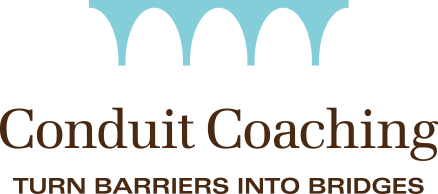Resources
The Leading Edge
Your Guide to Turning Barriers into Bridges
Power Vision
There are times that feel like a new beginning, and they’re ideal for envisioning where I want to go next in life and how I’m going to get there.
I’ve noticed “visioning” can also be a powerful strategy for many of my coaching clients, but I wasn’t sure why until I recently ran across some fascinating research from the field of brain science.

Why it Works
In a landmark 1994 study, much-honored Harvard professor Stephen Kosslyn concluded that the same brain neurons are triggered whether participants actually saw something or closed their eyes and envisioned it.
Other studies explain what happens when our visions are thrown for a loop — when we don’t do as well as we expected on a project, for instance, or when we’re blindsided by others’ behaviors. The trigger here is inconsistency between what we see in the world outside of us and the “mental pictures” we maintain inside. Our minds actually work to overcome these discrepancies, either by changing our mental pictures or by determining to change our circumstances.
Put these findings together, and it all makes sense: When we mentally “see” ourselves as successful the mind thinks, “I’m successful.” And if it discovers differences between what’s out there and what it’s been imagining, it gets busy convincing us to bridge that gap.
Weird, huh? Yet history is full of classic examples like Martin Luther King’s “I have a dream” speech. King envisioned his dream clearly, imagined it was true, shared it with the world, and it happened.
Visioning is also a trusty tool used by elite athletes. And I’ve seen it work for clients in all sorts of contexts including business negotiations, sales presentations, acquiring homes and vacation properties, even golf games.
You’ve probably experienced it yourself.
How to do it Right
Of course, visions aren’t infallible. And there’s more to it than simply wishing to win. But done right, the process enhances our chances of success. Brain science offers a few tips for effective visioning.
- Imagine the journey as well as the destination.
A 2005 study found that university students who visualized getting good grades and the process of achieving that success enjoyed studying more than their peers, experienced lower levels of anxiety, and, yes, earned better grades. - Involve all your senses.
Imagine what you’ll see, what you’ll hear others say, what you’ll tell yourself, what you’ll feel kinesthetically, and especially what you’ll feel emotionally. Being specific maximizes the gap your brain will want to bridge, setting it up to work that much harder toward your ideal reality. - Keep the dream alive.
Develop a daily habit of reconnecting to your vision of success. Otherwise you’ll eliminate the internal messages that create dissonance between your actual and imagined situations. Without that incongruity, your mind will stop pushing you to bridge the gap. - Take action aligned with your vision.
Sitting around waiting for a miracle isn’t powerful visioning. As gambling establishments like to remind us: you can’t win if you don’t play.
Where are you Headed?
Take a little time when there’s a new beginning, whether it’s because the calendar says so or you know it’s the right time, to envision the next stage of your journey, where you’d like to end up and how you might get there. Then let your mind lead you in transforming that dream into reality.
Your turn
I’d love to hear how you’ve turned barriers into bridges and what those strategies have done for your business and your life. Write me@conduitcoaching.com.

